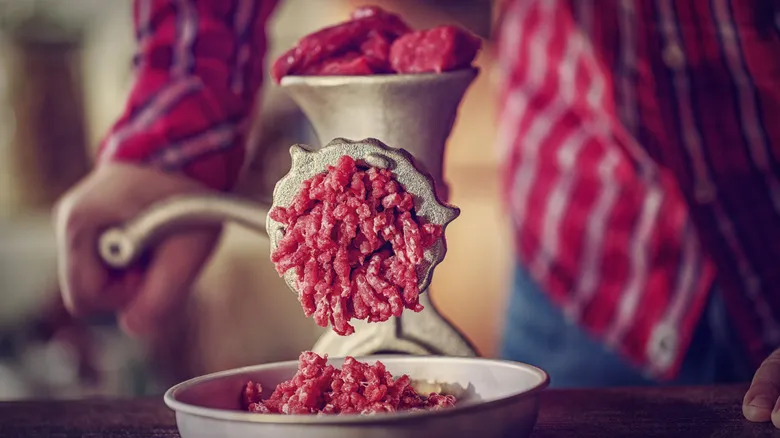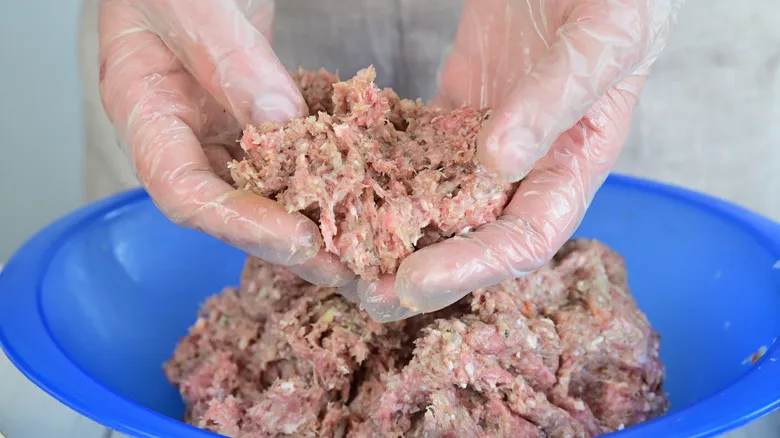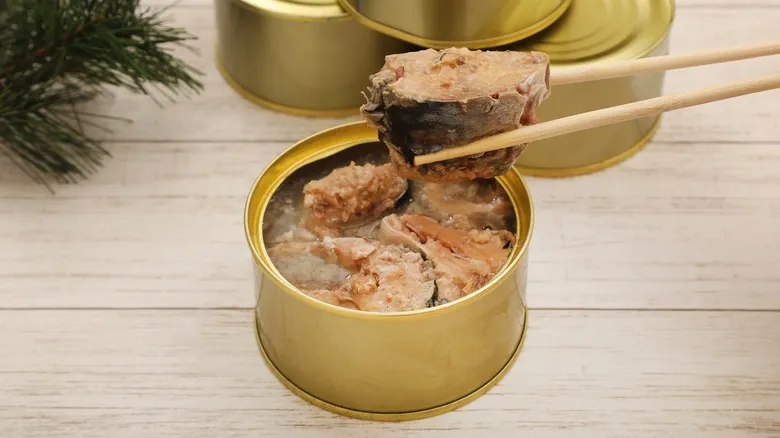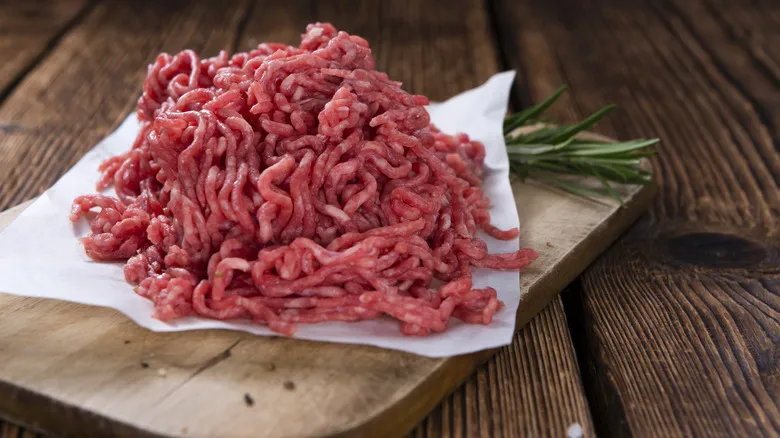Ground meat is processed more than other cuts of meat

When meat is ground, it exposes a greater surface area to air, as it is broken down into much smaller pieces. This increases the likelihood of bacteria adhering to the meat, which can lead to spoilage occurring more quickly than with larger cuts, such as steaks, roasts, or chicken breasts.
The U.S. Department of Agriculture (USDA) identifies two types of bacteria that can develop in ground meat: spoilage bacteria and pathogenic bacteria. While spoilage bacteria may not cause foodborne illness, they can still diminish the meat's quality, resulting in a less flavorful taste, unpleasant odor, and a sticky texture. In contrast, pathogenic bacteria, like Salmonella, can lead to foodborne illnesses.
Grinding also disperses any existing bacteria throughout the meat, which can accelerate bacterial growth, particularly if the meat is stored at temperatures above 40 degrees Fahrenheit. To inhibit bacterial proliferation, the USDA advises cooking or freezing ground meat within two days of purchase.
Additionally, employing proper freezing methods can help maintain the freshness of your meat. When it’s time to thaw frozen meat, the USDA recommends doing so in the refrigerator, as the cooler temperatures help prevent bacterial growth. After thawing, be sure to cook or refreeze the meat within 24 to 48 hours.
How to tell if ground meat is bad

If you're approaching the one to two-day mark and are uncertain about the freshness of your meat, there are several indicators to consider. Start by examining the color of the meat. If the exterior has turned brown or gray, it may be a sign that it's beginning to spoil. However, if the interior appears gray or brown, there's usually no cause for concern, as this is often due to a lack of oxygen exposure. The USDA offers additional guidance for assessing the quality of ground meat. They suggest feeling the meat; if it feels sticky or slimy, it may be spoiled, and it's advisable to discard it. A smell test can also be useful—if the meat has a tangy or rancid odor, it’s likely no longer safe to eat.
Lastly, check the best-by or sell-by dates on the packaging. While these dates are not strictly regulated and don't provide a complete assessment of the meat's safety, they can serve as a useful reference for when to use the product. Consuming spoiled meat can lead to food poisoning, so it's always wise to prioritize safety.
Recommended

Why You Should Buy Dirt Cheap Vegetable Peelers

Removing Corn Silk Is Easier With Your Trusty Potato Brush

Atlantic Mackerel Is The Most Underrated Tinned Fish

The Easiest Way To Remove Food Stains From Plastic Storage Containers
Next up

